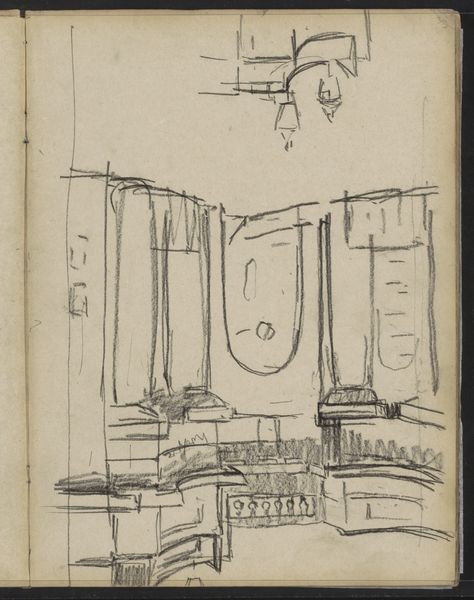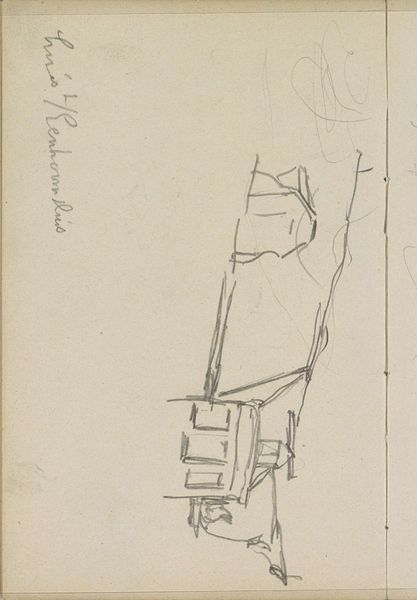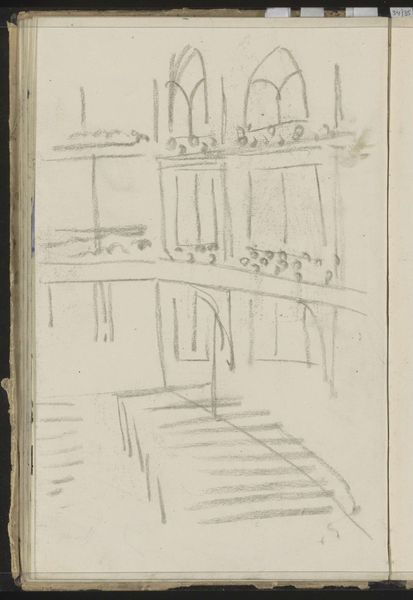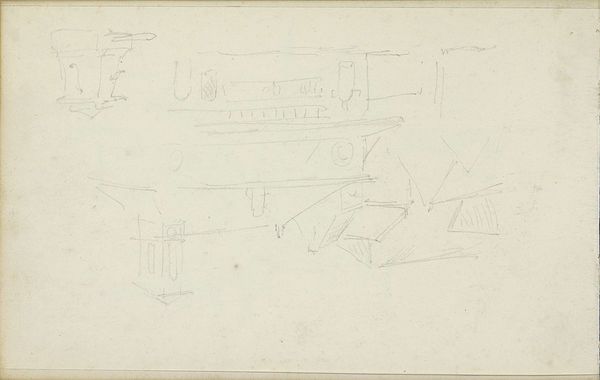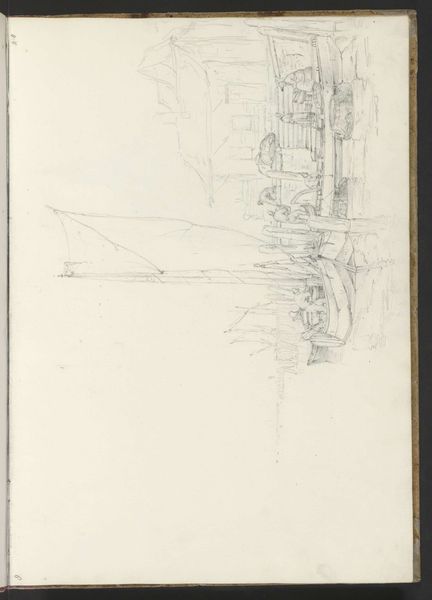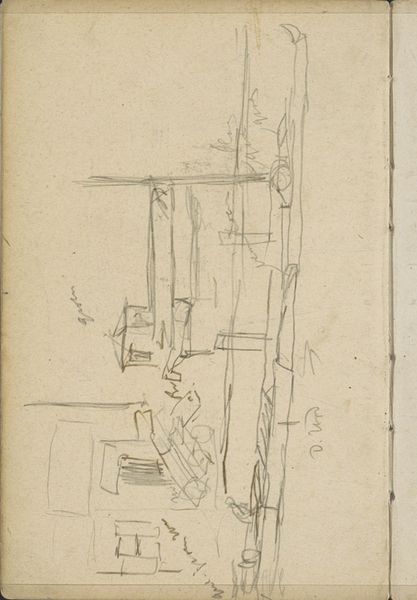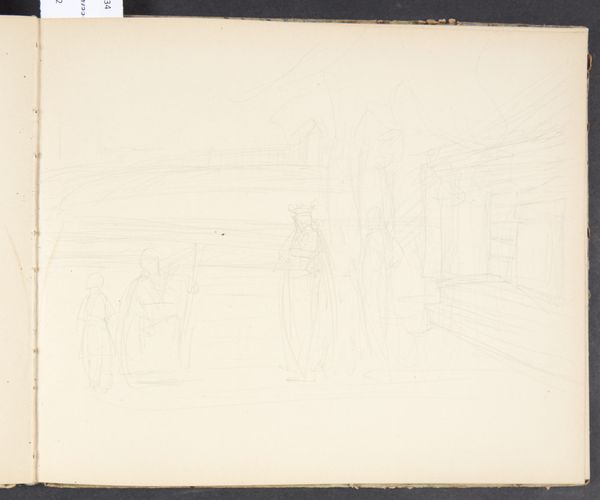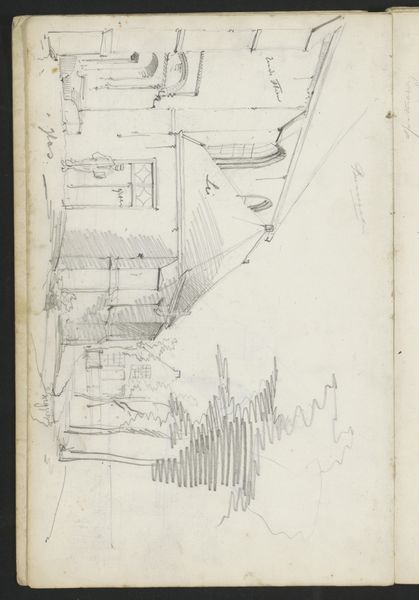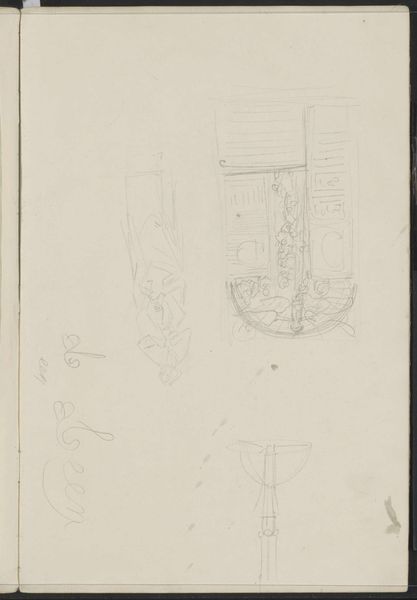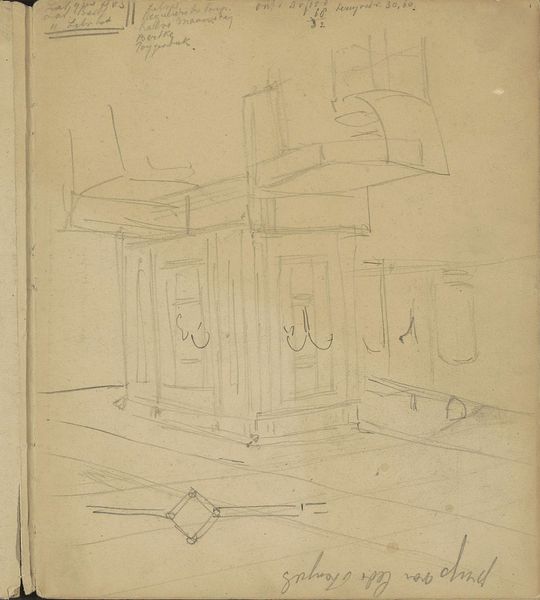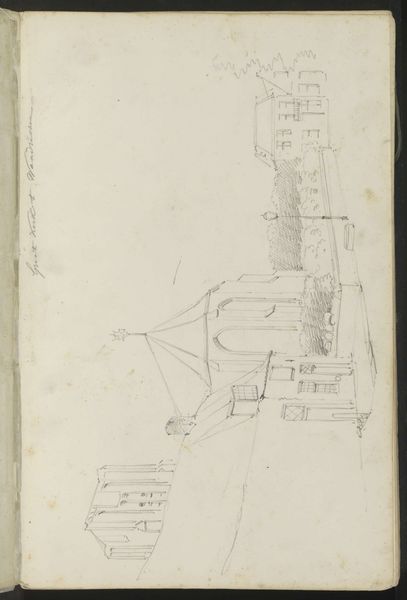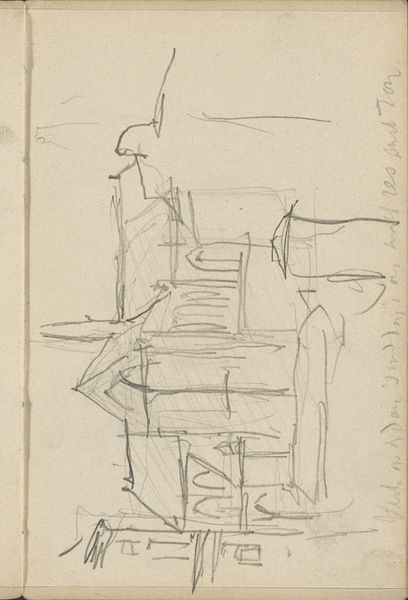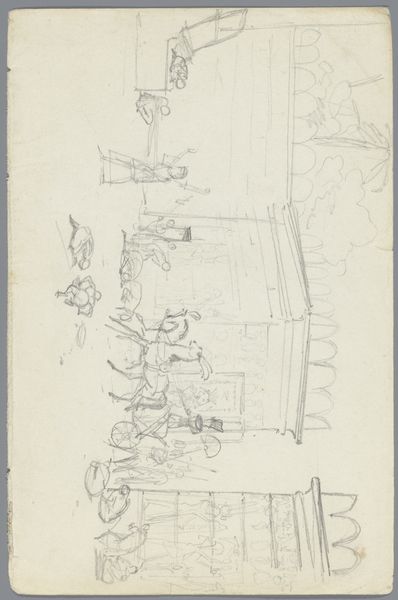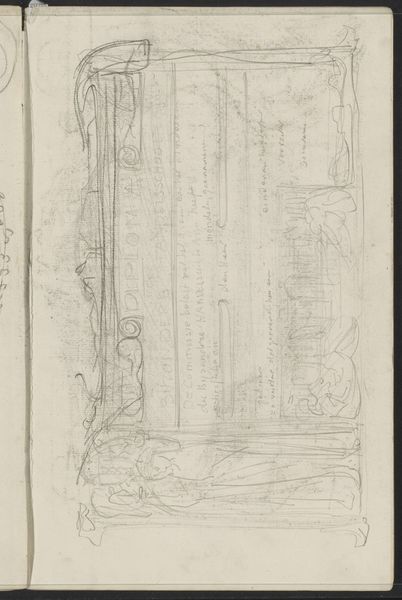
#
quirky sketch
#
sketch book
#
personal sketchbook
#
idea generation sketch
#
sketchwork
#
ink drawing experimentation
#
pen-ink sketch
#
sketchbook drawing
#
storyboard and sketchbook work
#
sketchbook art
Copyright: Rijks Museum: Open Domain
Curator: At the Rijksmuseum, we have a compelling, rather somber pen-and-ink sketch entitled "Grave and a Gravestone," by Carel Adolph Lion Cachet, dating from around 1897-98. What are your first impressions? Editor: Stark. Even unfinished, the image exudes finality. The sketchy lines barely contain the forms; it's all edges and angles. It lacks the comforting polish we expect, especially around memorials. It's rough. Curator: Cachet's sketchbook functions almost as a mnemonic device, a repository of potent imagery he would later revisit. This sketch represents more than just stone. Tombstones and burial sites across cultures are loaded symbols. In this case, the barely legible inscription hints at remembrance and a sense of loss. What narratives or cultural scripts do you perceive? Editor: It speaks to the cultural obsession with preserving memory, but it also underscores labor practices. The execution itself mirrors the physical toil inherent to stonemasonry. Raw strokes mimicking the craftsman's chisel. Look how he builds the grave not with grand strokes, but repeated tentative, and economical movements. Curator: You know, seeing it that way allows me to imagine the sketch being both an aesthetic observation of funerary architecture and a kind of symbolic performance related to social concerns and craftsmanship of that period. It's fascinating how the artist uses something so universally understood—mortality—to make something intensely personal. The inscription, while vague, evokes reflection. Editor: Precisely. By reducing the stone and its lettering to simple strokes, Cachet's focusing less on glorifying an individual or commemorating a single historical narrative, but on a system of symbolic gestures. A grave reminds us that mortality awaits, but tombstones? Tombstones imply wealth, memory, the control to define history itself. Curator: Cachet captures something very potent, doesn't he? This isn't merely an illustration, but a reflection on societal values. It underscores the profound intersection of grief, remembrance, labor, and legacy. Editor: I see this not as mere documentation, but social critique made visible in line. Thinking about materials brings out complex historical narratives of production and societal values that intersect unexpectedly.
Comments
No comments
Be the first to comment and join the conversation on the ultimate creative platform.
